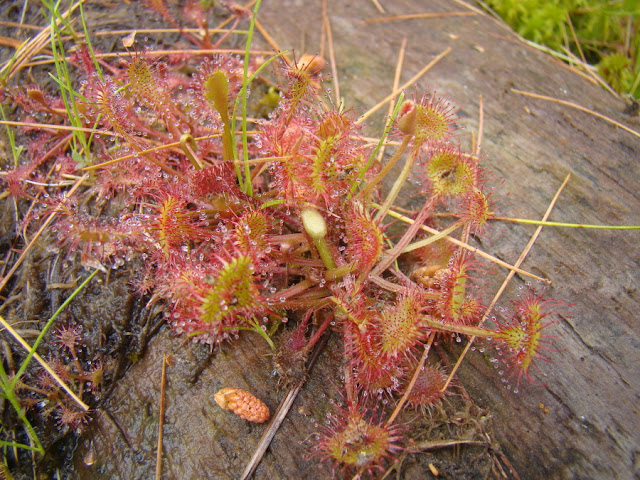On Friday the Lakes Region Conservation Trust (LRCT) sponsored a guided paddle on Lake Wicwas.
 |
| Setting off from the boat launch. |
The trust stewards protected land and conservation easements on eight properties around Lake Wicwas, protecting the second largest land mass in the watershed after the Town of Meredith. The LRCT has been an invaluable partner in protecting the Lake Wicwas watershed and the quality of water in Wicwas as well as Winnisquam and other water bodies downstream. In the Lakes Region, they have protected almost 29,000 acres of land, including popular properties such as Red Hill, Castle in the Clouds, and several islands in Winnipesaukee - even an island in Wicwas. Their properties include 90 miles of maintained trails. You can find detailed information about their properties including trail maps here.
Friday's excursion was attended by an enthusiastic group of paddlers that explored much of the lake, learning about conserved lands dating from the 1930s up until very recently when four generous land owners donated additional land, all of which has provided the setting for the healthy habitats we viewed. One of my favorite wetland flowers, the Rose Pagonia, was on display for us.
 |
| Rose Pagonia (Pogonia ophioglossoides) flowers are only 3/4" across. |
This small, delicate member of the orchid family can be seen in many of the marshes around the lake. We also saw a carnivorous plant, the round-leaved sundew, which catches insects on its many sticky hairs, and then digests them for food.
 |
| The meat-eating round-leaved sundew (Drosera rotundifolia) |
The paddlers got to see an osprey, herons, lots of eastern kingbirds, as well as loons. We talked about loon breeding habits and their territorial behavior. The loon nest that is still occupied was viewed from a far distance, too far to see the nest so as not to disturb them, but the nest where Checkers and LuLu were incubated allowed an up-close examination of a loon nest.
 |
| The now-abandoned nest where LuLu and Checkers were incubated. |
Loons leave their nest within a day or two of the chicks hatching so approaching a nest at this point is not harmful. Shell fragments from their eggs are still visible in the nest.
Unfortunately for us, we didn't see the new chicks even from afar because they've been off avoiding the rogue loon. My guess is now that the chicks are larger and able to travel to avoid the rogue, the parents have decided to stop fighting and save their energy for caring for the chicks. Someone (thanks SD!) reported that they saw a single loon take off from the lake, so maybe the rogue has departed. On the other hand, I received another report - with pictures - that a rogue was over harassing the other loon pair in Harris Cove!
 |
| The Harris pair is now defending their territory. Photos by Debbie Crowley. |
Both parents-to-be engaged in fighting off the rogue, leaving the nest unoccupied and the eggs exposed.
But this gave an opportunity to see the eggs, and like the first nest, there are two of them.
 |
| Two more potential chicks. Photo by Debbie Crowley. |
Debbie is a fabulous photographer.
Whatever the cause, while the rogue was away the northern family was able to come back our way so we got to see how much LuLu and Checkers have grown. We also witnessed a training session. Dad came up with a fish from down in the weeds.
 |
| "I'll take that, dad." |
After clearing away the seaweed he was ready to hand it over to the chicks, but mom had other ideas.
 |
| "It's time to start their lessons." |
She was able to convince dad to give her the minnow.
Which she brought to the chicks and dropped it in the lake for them to catch.
Either they didn't catch it, or it was too big for them, but the the training session went on for some time as she recaptured and delivered the tired minnow to both LuLu and Checkers multiple times to help them learn the ropes of catching their own food.
When they tired of the game mom gobbled the fish up herself. But the family returned in the afternoon for another training session. We saw the chicks making small dives on their own when the parents dove, so they're already getting the hang of fishing.
LuLu and Checkers seem to get along very well with no bickering or one picking (literally) on the other like we've seen in some years.
 |
| Happy siblings. |
I do enjoy watching them - I'll be fine if the rogue stays away for a while.











































